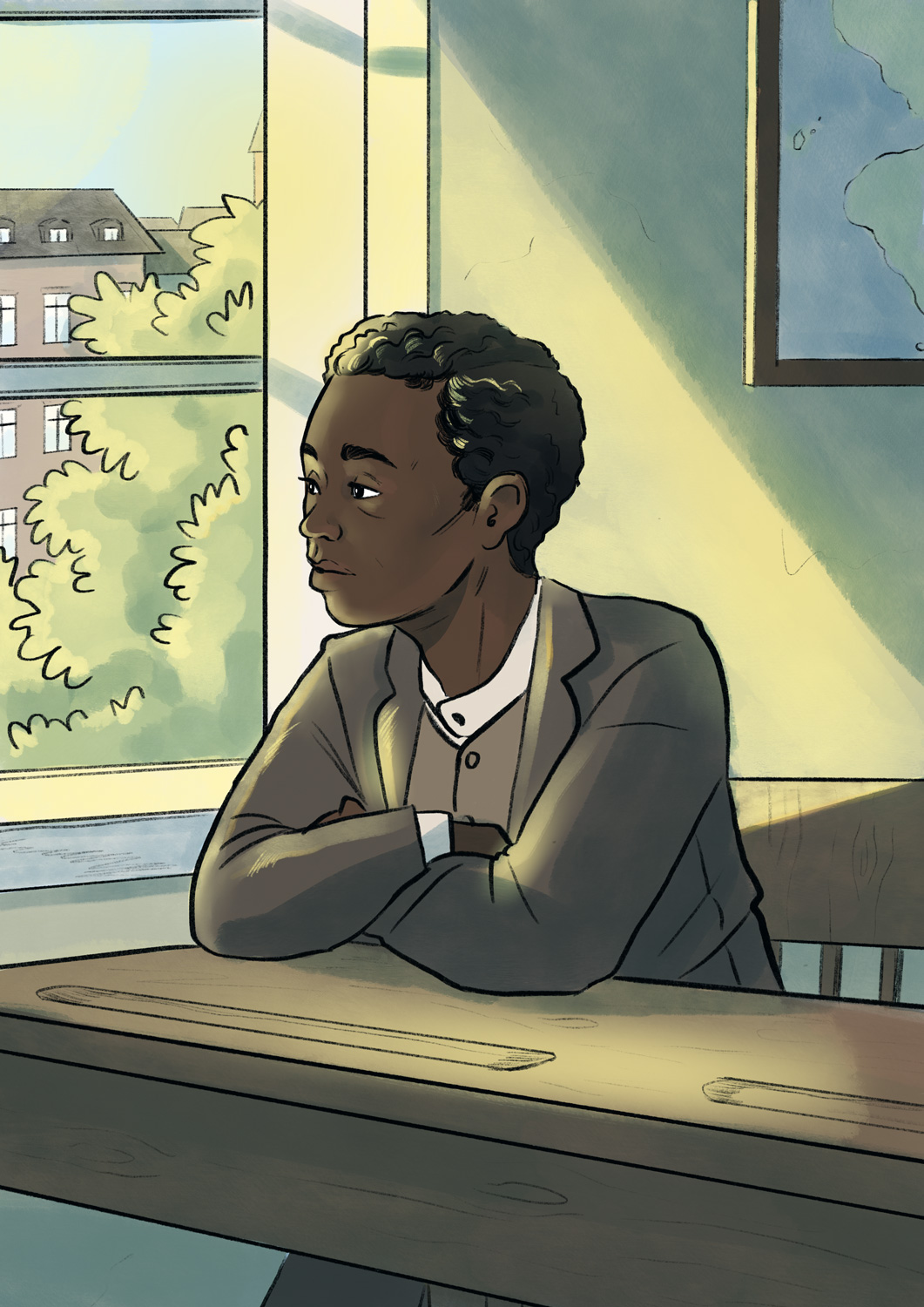
Some did well and returned to Sweden as wealthy men. Some would come home for a visit, only to return to their plantations and industrial enterprises in the tropics shortly afterward. At times, they were accompanied by black servants.
In the summer of 1861, an anonymous black boy lived at the estate of proprietor (landowner) Major Fredrik Wierth in Landskrona. In 1825, when only a boy, Fredrik Wierth, was sent to the French colony of Isle de Bourbon (now La Réunion). He could not return to his homeland, Sweden, until the summer of 1860. Having finally finished his business dealings on the remote island, Major Wierth moved home for good. He brought with him a black boy, who could be seen walking the streets daily, which, according to the local newspaper, 'caused a few raised eyebrows in the small town'.
Accounts of another anonymous black servant can be found along with details of a man called Wilhelm Eriksson, who visited Stockholm in the autumn of 1896. Wilhelm Eriksson is said to have left Sweden for South Africa (then a British colony) in 1885 when he was very young. During his time in South Africa, Eriksson, in conjunction with around twenty other Scandinavians, fought in the Matabele War when the British and their superior armed forces crushed the Ndebele Kingdom (now Zimbabwe). Otherwise, Wilhelm Eriksson had spent most of his time as a 'digger' in search of diamonds in the Kimberley area. The black man who accompanied him to Sweden is said to have been from Mozambique (then a Portuguese colony) and "utilized" by Eriksson in his panning for diamonds.
Wholesaler Fritz Theorin was another Swede who tried his luck in Africa. Leaving Sweden in the early 1870s, he worked as an agent for the British shipowner and businessman John Holt on the west coast of Africa. Theorin also managed a factory on the island of Elobey, off the coast of Equatorial Guinea (then a Spanish colony). At the request of Hjalmar Stolpe and SSAG (the Swedish Society for Anthropology and Geography), Fritz Theorin collected ethnographic objects. These can be found at the National Museums of World Culture today. When he moved back home to Stockholm in the autumn of 1889, Fritz Theorin brought with him a black boy from Cameroon (then a German colony). The boy, described as a foster son and servant, is said to have been 'redeemed from slavery' by Theorin. According to the newspapers, the boy claimed to originate from central Cameroon. He was eight years old - though he could not say who his parents were, nor to what ethnic group he belonged. In the autumn of 1891, the newspaper reports on the boy starting school, after which he is given a name. A black boy 'named Bona Bassa, currently staying with Wholesaler Fr Theorin, Bergsg 36 in Stockholm, was last week enrolled at Kungsholmen Elementary School where he attracted a great deal of attention among his white peers who, crowding around him, were eager to make his acquaintance.'
None of the information found about these individuals reveals what happened next. Therefore, we do not know if the people of Landskrona eventually got used to Major Wirth's boy servant or if Bona Bassa got to grow up here in Sweden. They were obviously considered odd enough to be mentioned in the newspapers - though usually unnamed. Unfortunately, this makes it even more challenging to search for them in other sources.
Sources
Information relating to Landskrona sourced from https://tidningar.kb.se.
Learn more about Fredrik Wirth's eventful life in Lise Drougge's novel 'Min fjärran ö' (My distant island) (1977).
His servant grew up to call himself John Wierth/Jean Baptist Barni. Stockholmskällan shares some information on his later life here https://stockholmskallan.stockholm.se/sok/?q=wierth
Details of the man from Mozambique and Bona Bassa sourced from https://tidningar.kb.se.
More about Bona Bassa's school years found at Stockholmskällan